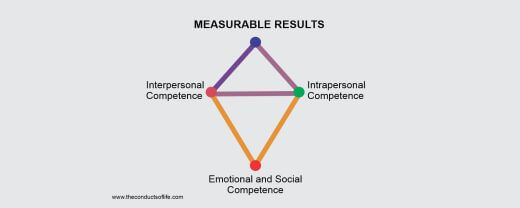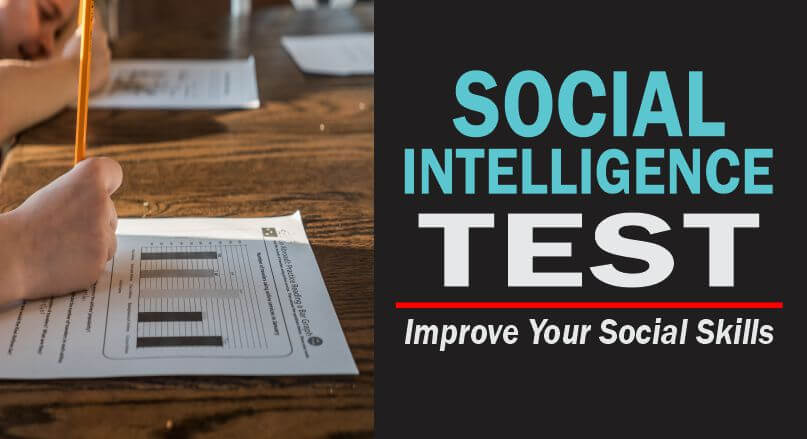Last updated on April 25th, 2025 at 02:52 am
Discover what a social intelligence test is, how to take one, examples of popular tests, and the benefits for personal and professional growth.
Taking a social intelligence test can increase self-awareness, improve communication, and enhance conflict resolution skills.
It measures your ability to navigate social situations effectively and involves self-reporting, performance-based, or multi-dimensional assessments.
In this post, we will have an in-depth discussion on what a social intelligence questionnaire is, how to take the test, examples, and benefits.
Related: Witty Banter: The Art Of Clever Conversations
Table of Contents
- What is a Social Intelligence Test?
- Types of Social Intelligence Tests
- The Validity and Reliability of Social Intelligence Questionnaire
- How to Take a Social Intelligence Test
- Taking the Test
- Examples of Social Intelligence Tests
- The Benefits of Taking a Social Intelligence Test
- The IDRlabs Social Intelligence Scale (IDR-TSIS)
- Social Intelligence Questionnaire
- How Social Intelligence Test Improves Social Skills
- Conclusion
- Frequently Asked Questions
What is a Social Intelligence Test?
A social intelligence test or social intelligence questionnaire is a tool used to measure a person’s ability to navigate and understand social situations and relationships.
It assesses various skills related to social interactions, such as empathy, communication, interpretation of social cues, and the ability to regulate emotions in social settings.
These tests are like personality tests and are designed to evaluate a person’s strengths and weaknesses in social situations and to provide feedback on areas where they may need improvement.
The social intelligence questionnaire can be administered in various forms, including self-report questionnaires, interviews, or behavioral tasks.
Social Intelligence Tests are often used in a variety of settings, such as in schools, workplaces, and clinical settings, to help individuals improve their social skills and interactions.
They can also be used to identify individuals who may be at risk for social difficulties or who may benefit from targeted social skills training.
Related: Low Emotional Intelligence Signs, Causes, and How To Deal With It

Types of Social Intelligence Tests
1. Self-Report Tests
Self-report tests gauge individuals’ social skills and abilities through self-reported responses.
They assess communication, empathy, and understanding of social norms. While useful for self-perception and identifying areas for improvement, they can be biased and may not fully reflect actual social skills.
The Social Intelligence Scale (SIS) is a common self-report test. It measures social skills in various domains.
It’s best to use self-report tests alongside other assessments for a comprehensive understanding of social intelligence.
Related: Self-management Skills
2. Performance-based Tests
Performance-based tests evaluate social skills and abilities through actual performance in social situations, such as role-plays or interactive tasks.
They offer an objective assessment of social intelligence by measuring behaviour rather than self-reported beliefs.
These tests provide valuable feedback on areas for improvement, like communication and empathy.
The Awareness of Social Inference Test (ASIT) measures the ability to infer social cues, while the Emotional Intelligence Appraisal (EIA) assesses emotional recognition and regulation.
Performance-based tests offer a comprehensive assessment of social intelligence and identify areas for improvement.
Related: Why You Cringe When Others Embarrass Themselves
3. Multi-Dimensional Tests
Multi-dimensional tests evaluate an individual’s social intelligence by assessing their cognitive and emotional abilities in areas like empathy and social decision-making.
Unlike traditional intelligence tests, they take a holistic approach, including social and emotional intelligence.
These tests present scenarios requiring the interpretation of social cues and appropriate social decisions.
Results offer valuable insight into an individual’s social intelligence, crucial in fields like education, psychology, and business where social skills are essential.
Related: Effective Ways to Improve Emotional Intelligence

The Validity and Reliability of Social Intelligence Questionnaire
The validity and reliability of social intelligence tests are crucial for evaluating their usefulness and accuracy.
Validity assesses whether a test measures what it’s intended to measure, including content, construct, and criterion validity.
Content validity ensures all relevant dimensions are covered, while construct validity measures the underlying construct of social intelligence.
Criterion validity compares test results to related external criteria. Reliability measures the consistency of test results over time and across different raters or testing situations, ensuring consistent outcomes.
There are several ways to assess the reliability of social intelligence tests, including:
- Test-retest reliability
- Inter-rater reliability, and
- Internal consistency reliability
Test-retest reliability involves administering the test to the same individual on multiple occasions to assess whether the results are consistent over time.
Inter-rater reliability involves assessing whether different raters produce consistent results when administering the test.
Internal consistency reliability involves assessing whether the different items or components of the test are measuring the same underlying construct.
The validity and reliability of social intelligence tests are crucial for ensuring that the test accurately measures an individual’s social intelligence and produces consistent results over time and across different testing situations.
Related: The Importance Of Self-Awareness, Types, and Its Improvement
How to Take a Social Intelligence Test
Remember, social intelligence is a multifaceted construct that involves many different skills and abilities.
No test can capture the full range of social intelligence, but taking a social intelligence test can be a useful starting point for self-reflection and personal growth.
Here is how:
Preparation for Taking a Social Intelligence Test
If you are preparing to take a social intelligence test, there are a few things you can do to improve your performance and increase your confidence. Here are some tips:
1. Practice and Relaxation Techniques
- Practice Social Skills: Practice active listening, communication, empathy, and emotional regulation in your daily interactions. The more you practice these skills, the more natural they will become, and the more confident you will feel when taking the social intelligence test.
- Observe Social Cues: Social intelligence tests often measure your ability to recognize and interpret social cues, such as facial expressions, body language, and tone of voice. Pay attention to these cues in your daily interactions to improve your skills.
- Read About Social Intelligence: Reading books and articles about social intelligence can help you understand the concept better and give you insights into how to improve your skills.
- Take Practice Tests: There are many social intelligence tests available online that you can take to practice. This can help you become more familiar with the types of questions and tasks that are likely to appear on a social intelligence test.
- Reflect on Your Past Social Interactions: Take some time to reflect on your past social interactions and think about how you could have handled them differently. Consider seeking feedback from friends or colleagues to gain insights into your strengths and weaknesses.
- Understand the Purpose of the Test: Understanding the purpose of the test will boost enthusiasm and also prepare your mind for the result. It is crucial to interpret the results and use them effectively.
- Manage Stress and Anxiety: Anxiety and stress can negatively impact your performance on a social intelligence test. To manage stress and anxiety, practice relaxation techniques such as deep breathing, mindfulness meditation, or progressive muscle relaxation. Take breaks, engage in physical activity, and get enough rest to keep your stress levels under control.
- Eat and Sleep Well: Eating a healthy, balanced diet and getting enough sleep is essential for optimal cognitive performance. Avoid caffeine and alcohol, which can interfere with sleep and increase anxiety.
- Stay Positive and Confident: It’s essential to stay positive and confident when taking a social intelligence test. Believe in yourself, stay calm, and focus on doing your best. Remember, the test is designed to measure your social skills, and your performance on the test does not define your worth or intelligence.
Related: Overcoming Social Awkwardness
2. Knowing What to Expect
Knowing what to expect when taking the test can help you prepare for the test and reduce anxiety.
Here are some things you can expect:
- Types of Questions: Social intelligence tests typically include questions related to communication, empathy, emotional regulation, and social perception. The questions may be in the form of scenarios or situations where you are asked to respond to a particular social cue or make a decision based on social context.
- Time Limit: Most tests have a time limit, which can range from a few minutes to an hour or more. Make sure to manage your time effectively and answer as many questions as possible within the allotted time.
- Format: It can be presented in various formats, such as multiple-choice questions, rating scales, or open-ended questions. Make sure to read and follow the instructions carefully to ensure you understand what is expected of you.
- Self-reflection: Some tests may require you to reflect on your own social experiences or emotions. This may involve answering questions about how you would respond in a particular situation or reflecting on past social interactions.
- Feedback: Some social intelligence tests may provide immediate feedback on your performance, while others may provide a score at the end of the test. Feedback can help identify areas where you excel and areas where you may need improvement.
Related: Reasons Why Emotional Intelligence is Greater than IQ
Taking the Test
1. Answering the Questions
Answering questions on a social intelligence test can be challenging, as the questions are designed to measure your social abilities and skills.
Here are some tips on how to approach and answer the test questions:
- Read the Question Carefully: Make sure you understand what the question is asking. Pay attention to any social cues, context, or scenario that may be provided to help you answer the question.
- Consider All Options: Take the time to consider all possible options before selecting an answer. Some questions may have multiple correct answers, so make sure to consider all possibilities before choosing your response.
- Use Your Social Skills: Use your social skills, such as communication, empathy, and emotional regulation, to help you answer the question. Think about how you would respond in a real-life situation and use your social skills to guide your response.
- Be Honest: It’s important to be honest when answering questions on a social intelligence test. Don’t try to give the “right” answer or try to second-guess what the test is looking for. Instead, answer each question truthfully based on your own experience and social abilities.
- Stay Focused: Stay focused and avoid distractions when taking the test. It’s essential to give each question your full attention and answer each question to the best of your ability.
- Don’t Overthink: Overthinking can lead to anxiety and uncertainty, which can negatively impact your performance on the test. Instead, trust your instincts, use your social skills, and answer the questions to the best of your ability.
2. Timing and Pacing
Timing and pacing are essential factors to consider when taking a social intelligence test.
Here are some tips on how to manage your time effectively and maintain a good pace during the test:
- Read the Instructions Carefully: Take the time to read the instructions carefully before starting the test. Make sure you understand how much time you have and how many questions you need to answer.
- Set a Pace: Set a steady pace that allows you to answer each question carefully without spending too much time on any one question. If you get stuck on a question, move on to the next one and come back to it later.
- Manage Your Time: Keep an eye on the clock and manage your time effectively. If you are running out of time, try to answer as many questions as possible. However, if you have extra time, go back and review your answers and make sure you have answered every question.
- Use Shortcuts: Use shortcuts to help you answer questions more quickly. For example, if the question asks you to identify a particular emotion, look for clues in the facial expressions or body language of the people in the scenario.
- Practice: Practice taking social intelligence tests to get a better sense of how long it takes you to answer different types of questions. This will help you manage your time more effectively on the actual test.
- Don’t Rush: While it’s essential to manage your time effectively, don’t rush through the questions. Take the time to read and understand each question before answering. Rushing can lead to careless mistakes, which can negatively impact your performance on the test.
Related: How To Become A Smart Person Everyday
3. Strategies for Improving Test Performance
If you’re looking to improve your performance on a social intelligence test, here are some strategies you can use:
- Practice: Practice taking social intelligence tests to get familiar with the types of questions you’ll encounter and to build confidence in your abilities.
- Learn From Mistakes: When reviewing practice tests or taking the actual test, pay attention to the questions you missed and try to understand why you got them wrong. Use this information to improve your skills and avoid making the same mistakes in the future.
- Develop Your Social Skills: Social intelligence tests measure your social skills and abilities, so improving your social skills can improve your performance on the test. This includes skills such as communication, empathy, emotional regulation, and social perception. Practice these skills in everyday life to help you perform better on the test.
- Focus on Context: Social intelligence tests often provide context or scenarios to help you answer questions. Pay attention to the context and use it to guide your response. Try to think about the situation from different perspectives and consider how others might respond.
- Use Visualization: Visualization can help you imagine social situations and practice your social skills. Visualize different scenarios and imagine how you would respond in each situation. This can help you feel more comfortable and confident when answering similar questions on the test.
- Stay Calm and Focused: Maintaining a calm and focused mindset can help you perform better on the test. Take deep breaths, stay positive, and avoid getting overwhelmed by the questions.
Examples of Social Intelligence Tests
1. Emotional Quotient Inventory (EQ-i)
The Emotional Quotient Inventory (EQ-i) is a social intelligence test that measures an individual’s emotional and social competencies.
It was developed by Reuven Bar-On, and it consists of 133 items that are organized into five composite scales and fifteen sub-scales.
The EQ-i measures five composite scales:
- Self-Perception: This scale assesses the individual’s self-awareness and self-esteem.
- Self-Expression: This scale evaluates the individual’s ability to express emotions effectively and communicate with others.
- Interpersonal: This scale measures the individual’s ability to establish and maintain positive relationships with others.
- Decision Making: This scale assesses the individual’s ability to use emotions to guide decision-making effectively.
- Stress Management: This scale measures the individual’s ability to cope with stress and adapt to changing circumstances.
Description of Test
These items assess various aspects of emotional intelligence, including self-awareness, self-regulation, empathy, interpersonal relationships, stress tolerance, and adaptability.
The EQ-i is a self-report questionnaire that asks individuals to rate themselves on various emotional and social competencies on a scale of 1 to 5.
Each item on the EQ-i is scored on a 5-point Likert scale, with responses ranging from “strongly disagree” to “strongly agree.”
The individual’s scores on each of the five composite scales and fifteen sub-scales are then calculated based on their responses.
The interpretation of the EQ-i results involves comparing an individual’s scores to a norm group.
Norm groups are typically based on age, gender, and profession, and they provide a comparison point for the individual’s emotional intelligence score.
If an individual score above the norm group average on a particular composite scale or sub-scale, they may be considered to have high emotional intelligence in that area. If their score is below the norm group average, they may be considered to have lower emotional intelligence in that area.
Interpretation and Scoring
The interpretation of the EQ-i results can provide valuable insight into an individual’s emotional intelligence and can help identify areas where they may need to improve their emotional skills.
It’s important to note that the EQ-i is just one tool for assessing emotional intelligence and should be used in conjunction with other assessments and observations to gain a more complete understanding of an individual’s emotional intelligence.
The scores are then calculated, and individuals are given feedback on their emotional intelligence strengths and weaknesses.
The EQ-i is widely used in the workplace, schools, and clinical settings to help individuals and organizations develop their emotional intelligence skills and enhance their social interactions.
Application
The Emotional Quotient Inventory (EQ-i) has a wide range of applications in various fields.
Here are some examples:
- Workplace: The EQ-i is often used in the workplace to assess an individual’s emotional intelligence and to identify areas where they may need to improve their emotional skills. It can be used in recruitment, training, and leadership development programs to help individuals develop their emotional intelligence skills.
- Education: The EQ-i can be used in educational settings to assess students’ emotional intelligence skills and to help educators identify areas where students may need additional support. It can also be used in counseling and career development services to help students develop their emotional intelligence skills.
- Mental Health: The EQ-i can be used in mental health settings to assess an individual’s emotional intelligence and to identify areas where they may need support or intervention. It can also be used in therapy to help individuals develop their emotional intelligence skills and improve their mental health.
- Coaching: The EQ-i can be used in coaching settings to help individuals develop their emotional intelligence skills and to improve their performance in various areas of life, including personal and professional relationships.
- Research: The EQ-i can be used in research to explore the relationship between emotional intelligence and various outcomes, such as job performance, academic achievement, and mental health.
2. Social Intelligence Profile (SIP)
The Social Intelligence Profile (SIP) is a test that measures an individual’s social intelligence – that is, their ability to understand and navigate social situations effectively.
Description of Test
The Social Intelligence Profile (SIP) measures an individual’s social intelligence, assessing their ability to understand and navigate social situations effectively.
It is used in educational or workplace settings to evaluate social skills and identify areas for improvement.
The test presents scenarios requiring the test-taker to demonstrate their ability to read social cues, understand others’ emotions, and respond appropriately.
The SIP assesses several different aspects of social intelligence, including:
- Social Awareness: The ability to understand social norms and read social cues.
- Social Insight: The ability to understand others’ perspectives and motivations.
- Social Adaptability: The ability to adjust one’s behavior to fit different social situations.
- Social Expressiveness: The ability to communicate effectively and express emotions appropriately.
- Social Reasoning: The ability to analyze and understand social situations.
Scoring and Interpretation
The Social Intelligence Profile (SIP) test scores each question based on the individual’s responses, calculating a total score to assess their social intelligence.
It measures various aspects of social intelligence, with scores combined for an overall assessment.
Results are compared to norm groups based on age, gender, or profession. While the SIP provides valuable insight, it should be used alongside other assessments and observations for a comprehensive understanding of an individual’s social skills.
Application
The Social Intelligence Profile (SIP) is a tool that assesses an individual’s social intelligence, which is the ability to understand and navigate social situations effectively.
The SIP can be applied in various settings, including:
- Workplace: Employers can use the SIP to identify individuals with high social intelligence and recruit them for positions that require strong interpersonal skills, such as sales, customer service, and leadership roles.
- Education: Educators can use the SIP to identify students who may need additional support in developing their social skills, such as those with social anxiety or difficulties with social cues. The SIP can also be used to assess the effectiveness of social skills training programs.
- Counseling and Therapy: Mental health professionals can use the SIP to assess an individual’s social intelligence as part of a comprehensive assessment. The SIP can also be used to target specific social skills for intervention.
- Personal Development: Individuals can use the SIP to gain insight into their social strengths and weaknesses and identify areas for improvement. This can be particularly useful for individuals who are transitioning into new social environments, such as starting a new job or moving to a new city.
3. The Mayer-Salovey-Caruso Emotional Intelligence Test (MSCEIT)
Description of the test
The Mayer-Salovey-Caruso Emotional Intelligence Test (MSCEIT) is a well-known assessment tool for measuring emotional intelligence (EI).
Developed by Peter Salovey, John D. Mayer, and David R. Caruso in 2002, the test evaluates four branches of emotional intelligence:
- Perception of Emotions: The ability to identify emotions in oneself and others, including in objects, art, and other stimuli.
- Using Emotions: The ability to harness emotions to facilitate thinking and problem-solving.
- Understanding Emotions: The ability to comprehend the nuances of emotions and the relationships among different emotions.
- Managing Emotions: The ability to regulate one’s own emotions and the emotions of others.
The MSCEIT uses a series of tasks and scenarios to assess each of these four branches.
The test consists of 141 questions, and it takes approximately 35-45 minutes to complete.
The MSCEIT is scored by a computer program that uses a consensus scoring method.
This method compares the test-taker’s answers to those of a large, diverse sample of people who have taken the test before.
The program then calculates a score for each of the four branches and an overall score for emotional intelligence.
Scoring and Interpretation
The MSCEIT is scored based on the individual’s responses to the tasks. The scoring is based on a consensus of expert judgments about the correct answers to each task.
The score for each branch ranges from 0 to 100, and the total score is the average of the four branch scores.
Interpretation
The MSCEIT assesses emotional intelligence, with higher scores indicating higher emotional intelligence.
It measures the ability model of emotional intelligence but not other models like the trait model.
Criticisms include limited cultural validity. Caution is advised when interpreting results, and it’s best used alongside other measures and contextual factors.
The MSCEIT is utilized in clinical, educational, and research settings and is considered a valid and reliable measure of emotional intelligence.
Application
The Mayer-Salovey-Caruso Emotional Intelligence Test (MSCEIT) has diverse applications.
It’s used in recruitment to assess emotional intelligence for roles requiring such skills. It aids personal development by identifying areas for improvement and creating tailored plans.
Coaches and counselors use it to help clients develop emotional intelligence. In education, it assesses students’ emotional intelligence and informs skill improvement programs.
In research, it measures emotional intelligence and explores its connections to academic and job performance, as well as mental health.
Related: Importance of Social Awareness, Development and Examples
The Benefits of Taking a Social Intelligence Test
1. Personal Benefits
Taking a social intelligence test can enhance self-awareness and self-reflection by revealing strengths and weaknesses in social situations.
This awareness encourages objective self-examination and conscious efforts to improve social skills.
It also helps individuals recognize their emotional responses, social biases, and communication styles.
Higher social intelligence enables better emotional management and reactions, leading to improved relationships and reduced conflict.
2. Professional Benefits
Improved leadership and management skills: Improving social intelligence through a test can benefit professionals by enhancing leadership and management skills. Leaders with higher social intelligence can better understand and support their team, fostering a positive work environment and promoting creativity. In management, social intelligence is crucial for building strong relationships, and improving negotiation, conflict resolution, and team dynamics.
Enhanced conflict resolution and negotiation skills: Social intelligence tests aid individuals and organizations in assessing and developing conflict resolution and negotiation skills. Feedback from these tests helps individuals identify areas for improvement, leading to more effective strategies for managing conflicts and negotiations in various settings. Organizations can use these tests to identify employees with strong skills and provide targeted training, encouraging a collaborative workplace and better negotiation outcomes.
The IDRlabs Social Intelligence Scale (IDR-TSIS)
The IDRlabs social intelligence scale was developed by IDRlabs based on David H. Silvera, Monica, Martinussen, and Tove Irene Dahl, who were the authors of the Tromsø Social Intelligence Scale.
The IDR-TSIS is not associated with any particular researchers in the social psychology field, personality psychology, or any other appended research institutions.
David H. Silvera, Monica Martinussen, and Tove Irene Dahl with their work on the IDR-TSIS have informed the test items in the making of the well-known measure of social intelligence.
The IDR-TSIS is developed for the use of qualified mental health professionals and this present test is for the purpose of education only.
However, IDRlabs and the current social intelligence test are not in collaboration with the mentioned researchers.
It is based on prominent and reputable assessment measures of the Tromsø Social Intelligence Scale.
But this free online test cannot provide an extremely informative result assessment of your personality as it solely first takes.
This is because it is intended for education only. An accurate social intelligence test can only be carried out by a qualified mental health professional.
Take the free test via the following links:
Social Intelligence Questionnaire
Humans draw conclusions about the unobservable mental and emotional states of others. Social intelligence is the capacity to comprehend the “mental states” and read the emotions of others.
People with relatively poor social IQ are less adept at interpreting others’ non-verbal cues to determine their emotional states and mental states.
This outcome demonstrates that you might occasionally have trouble adopting another person’s perspective and accurately interpreting what the other person may be feeling or experiencing.
Social intelligence questionnaires help to gauge the level of social IQ of an individual. Gyfted has a questionnaire you can answer to know your level of social intelligence.
How Social Intelligence Test Improves Social Skills
Social intelligence questionnaires can improve social skills in several ways.
Here are some examples:
- Increased self-awareness: Social intelligence questionnaires can help you to become more aware of your own social skills and areas where they may need to improve. This can help you to identify your strengths and weaknesses and develop a plan to improve your social skills.
- Improved social awareness: Social intelligence tests can help individuals to become more aware of social cues and the emotions of others. This can help individuals to better understand the needs and perspectives of others, and respond appropriately in social situations.
- Enhanced communication skills: Questionnaires can help you to develop better communication skills, including active listening, asking questions, and expressing yourself effectively. This can help individuals to communicate more effectively with others and build stronger relationships.
- Improved relationship building: It can help you also to develop better relationship-building skills, including empathy, understanding, and respect for others. This can help individuals to build stronger and more meaningful relationships with others.
- Increased confidence: It can help you to feel more confident in social situations, as you develop a better understanding of social cues and how to respond appropriately.
Get Started with Social Intelligence Test
To access the social intelligence questionnaire to know your social iq level, check below.
Conclusion
The social intelligence test is a useful tool for assessing your ability to navigate social situations effectively.
By taking the test, you can gain insight into your strengths and weaknesses in areas such as empathy, communication, and relationship management.
The results of the test can provide you with valuable information about your social skills and help you identify areas for improvement.
Also, the test can be used to develop training programs and interventions to help individuals improve their social skills.
With practice and feedback, you can develop and enhance your social intelligence, leading to better communication, improved relationships, and greater success in your personal and professional life.
Frequently Asked Questions
What is a social intelligence test?
It is a type of assessment designed to measure a person’s social intelligence. It typically involves questions or tasks related to social situations and requires the individual to demonstrate their ability to understand and navigate these situations effectively.
Why might someone take a social intelligence test?
Someone might take a social intelligence test for a variety of reasons, such as to better understand their own social skills, to identify areas for improvement, or as part of a job application process that requires strong social skills.
What types of questions might be included in a social intelligence test?
Questions on a social intelligence test could cover a wide range of topics related to social situations, such as interpreting nonverbal cues, responding to social cues appropriately, and demonstrating empathy and understanding.
Are there any social intelligence tests available online?
Yes, there are several social intelligence questionnaires available online, although it is important to note that not all of these tests may be scientifically validated or reliable measures of social intelligence.
References:
- Mayer-Salovey-Caruso Emotional Intelligence Test (MSCEIT)
- Self-report Tests
- Test your Social Intelligence
- Self-administered test of social intelligence
- Psychological Test, Social Intelligence Assessment
Pyo Merez (PsyD) is a distinguished adolescent and adult psychologist at the forefront of mental health advocacy.
With expertise in cognitive and developmental psychology, focusing on social relationships, cultural contexts, and individual differences, Pyo has dedicated his career to empowering adolescents and adults.
As a sought-after speaker and panelist, Pyo shares invaluable insights on issues affecting young people, contributing to a deeper understanding of mental health and well-being in today's society.


